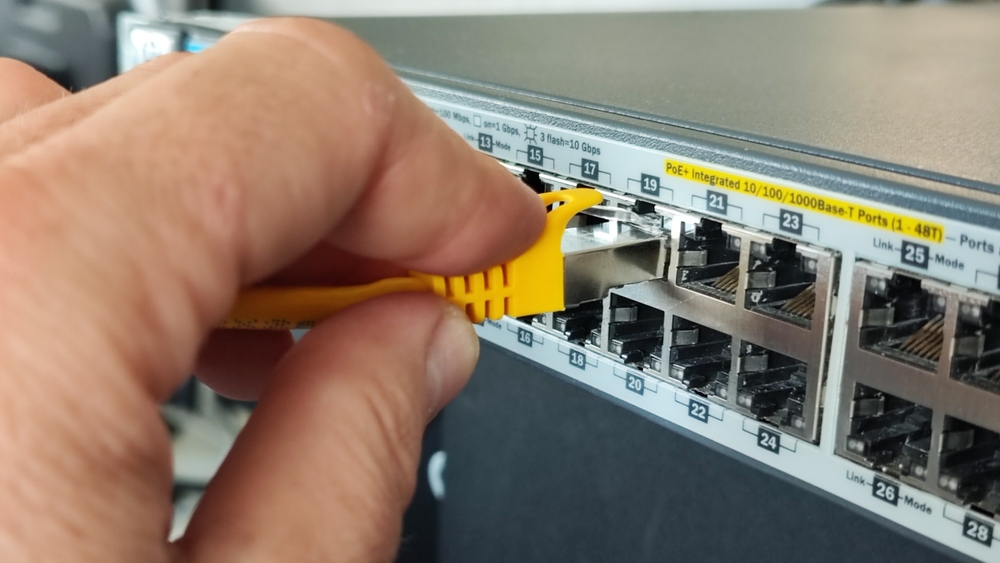It may be 2023, but this year the number 10 is top of mind for cable broadband providers. In early February, Comcast announced an initiative to upgrade their Xfinity network to 10G for 10 million homes across America by the end of the month. By 2025, they’re promising 10G access to a total of 50 million homes in 40 different markets. These upgrades may give some of the top technologies in the industry, like fiber, a run for their money — and their market share.
If you have a need for speed, a range of Wi-Fi upgrades may not promise as much as 10G will. If you’re still wondering what all of the hype is about, here’s what you need to know about the dawn of 10G.
What Is 10G?
10G refers to internet speeds of 10 gigabits, or 10,000 megabits, per second. The Federal Communications Commission (FCC) published a 2021 research report, titled Measuring Broadband America, and found that the average internet service provider (ISP) advertised packages with speeds of 146.1 Mbps. That means that a 10G upgrade to existing cable infrastructure guarantees speeds that are nearly 70 times as fast as that average. It’s important to keep in mind that the Measuring Broadband America report also studied packages with download speeds as low as 24 Mbps. By that metric, 10G is over 400 times as fast.
Don’t you mean 5G?
When people talk about 5G, they’re referencing the speeds of mobile cellular networks. That’s the data your phone taps into when you’re disconnected from Wi-Fi. While there are significant investments and rollouts of 5G cells that have phenomenal speeds, 10G promises more consistent speeds within your home. It’s easy to confuse the Gs, so keep in mind that 10G is referencing gigabits. The G in 5G stands for generation, since it’s following 4G, or the fourth generation, of cellular network speeds.
DOCSIS 4.0
DOCSIS stands for Data Over Cable Service Interface Specification. It’s a mouthful, but it’s important to know when learning about 10G, because the newest iteration of DOCSIS has allowed cable companies to maximize their existing wires to transmit higher bandwidth data. Each iteration of DOCSIS since the late 1990s has increased the upload and download speeds of cable internet services via existing infrastructure.
Specifically, DOCSIS 4.0 modems are ready to debut in the market to make 10G a reality. Between infrastructure upgrades and the release of the 4.0 modem, the anticipated speed increases are simply unprecedented.
How and Why Is This Happening?

The key fact to remember about 10G rollouts is that it’s cable technology, not fiber. Decades ago when in-home telephone lines reigned, cable companies built lines into homes that allowed hookups to be possible. Today, cable internet functions by making use of that historic infrastructure. Upcoming 10G upgrades are utilizing existing technology to amplify speed capabilities and compete with lightning-fast fiber. Some of the upgrades to the 10G network include:
Symmetrical Speeds
Have you ever noticed that it may not take long to download a file, but it does take long to upload one? That’s due to asymmetrical upload and download speeds. With 10G, a key promise is symmetrical speeds so that one function won’t lag behind the other.
Low Latency
Latency refers to the lag between an action by an internet user and the response. Think clicking a link, sending an email, or loading a YouTube video. When your broadband package has low latency, it means that the time it takes for that new page to load is low and the results you’re looking for are quickly presented.
Emergency Services
Part of Comcast’s Xfinity network upgrades will include a new device with cell and battery backup in case your home loses power in a storm. This is important for key markets where natural disasters like storms, floods, or hurricanes are common. In those situations, people who need assistance as soon as possible have no Wi-Fi to call for help when their power goes out.
Where Is This Rolling Out?

By 2025, Comcast is planning to touch down in more than 50 million homes across the country and provide them with 10G services. While the DOCSIS 4.0 modem is getting ready to debut, people can still get a taste of 10G service with a DOCSIS 3.1 modem. Markets that have already upgraded or are in the process of upgrading include Atlanta, Boston, Chicago, Denver, and Washington D.C., among others.
With 10G in your home, you'll be able to game, video chat, and stream a movie all at the same time. Or, if you have a family, all of your kids can be off in their rooms doing what they want to do at the same time without complaining about lags. That alone may be worth the 10G investment.


